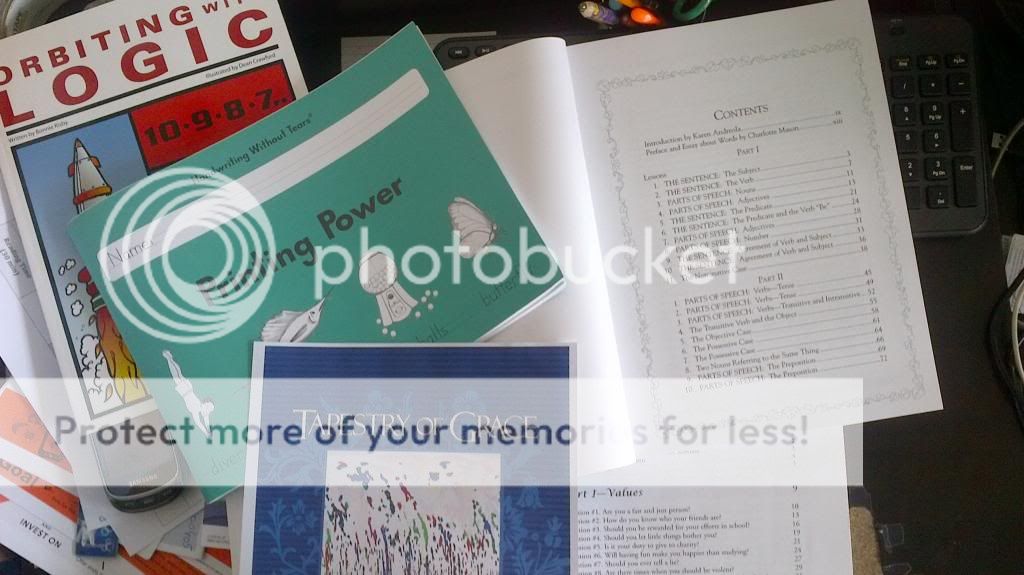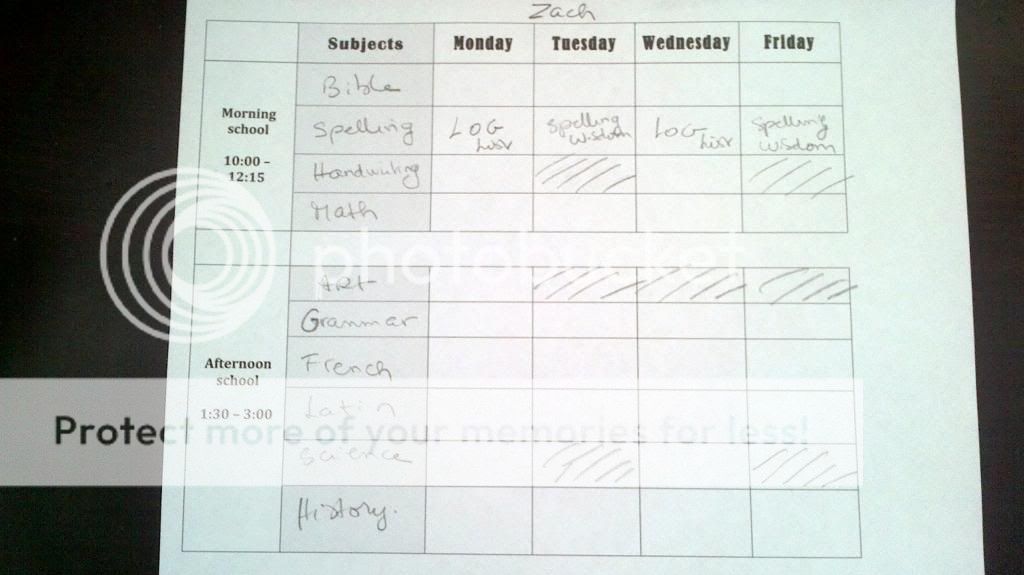As I mentioned in my planning post last year, I am not a planning person. However, every year that I homeschool I come to value the benefits of planning more and more. Some of these are:

So how do I go about my planning? Every year looks a bit different, because I am on a learning curve and because my curriculum are always changing year by year. On top of that is the added fact that the kids grow in their abilities, that is in the amount of work they can handle and how much independent work they can do.
That said, most of the basics stay the same. I work on:
When you think about it, the first step in homeschool planning is really the curriculum choices. For some, it is an ongoing activity (I would be in that camp), for some this happens a few months before the school year ends. Whichever camp you are in, the final buy often happens a few months before the next school year begins. That is when you begin your school planning per se.
If you are interested in our choices for this year, you will find them on my post on Homeschool Choices for 2013-2014.
The reason why your choices have to be determined before starting any real planning is because these curriculum are what is going to drive your schedule. At least for us that is how it works.
So now unto the planning . . .
I like to use Donna Young yearly calendar. I block out break times, and color them in, predetermined by:
 Once the yearly calendar is set up, I turn to a weekly schedule. What this means is that I figure out how many weeks each curriculum will take me and schedule a loose timetable. This is where having an open and go curriculum is nice and why I prefer them over unit studies. I do not do lesson planning. I only schedule how much time and how long it will take to get through a certain curriculum, and space it out accordingly.
Once the yearly calendar is set up, I turn to a weekly schedule. What this means is that I figure out how many weeks each curriculum will take me and schedule a loose timetable. This is where having an open and go curriculum is nice and why I prefer them over unit studies. I do not do lesson planning. I only schedule how much time and how long it will take to get through a certain curriculum, and space it out accordingly.
 Also, I usually list the subjects in a certain order but sometimes they get turned around depending on the mood, I supposed, of both mom and kids.
Also, I usually list the subjects in a certain order but sometimes they get turned around depending on the mood, I supposed, of both mom and kids.
All of this said, one thing I try to remember is that these are guidelines to help me and our homeschool run more smoothly and accomplish the things I set to accomplish. The schedules are not my master but my servants. I am not bound to them. Thinking in these terms allows me freedom and prevents me from stressing out when life events occur or what I had planned does not get done.

- You know where you are going
- You know what needs to be accomplished
- You stay on track
- You can look back and see what you have done
- It prevents you from being frantic all week or on a daily basis, i.e, minimizes chaos
- It helps you keep the kids focussed

So how do I go about my planning? Every year looks a bit different, because I am on a learning curve and because my curriculum are always changing year by year. On top of that is the added fact that the kids grow in their abilities, that is in the amount of work they can handle and how much independent work they can do.
That said, most of the basics stay the same. I work on:
- A yearly calendar
- A weekly schedule
- A tentative daily schedule or routine
When you think about it, the first step in homeschool planning is really the curriculum choices. For some, it is an ongoing activity (I would be in that camp), for some this happens a few months before the school year ends. Whichever camp you are in, the final buy often happens a few months before the next school year begins. That is when you begin your school planning per se.
If you are interested in our choices for this year, you will find them on my post on Homeschool Choices for 2013-2014.
The reason why your choices have to be determined before starting any real planning is because these curriculum are what is going to drive your schedule. At least for us that is how it works.
So now unto the planning . . .
The yearly calendar:
- when we are going to take our vacation (which is usually in the fall)
- how I am going to break down our Tapestry of Grace curriculum (which is our heaviest and longest curriculum), allowing for school blocks of about 4-8 weeks at a time.
- dates for religious holidays

The weekly schedule:
 Once the yearly calendar is set up, I turn to a weekly schedule. What this means is that I figure out how many weeks each curriculum will take me and schedule a loose timetable. This is where having an open and go curriculum is nice and why I prefer them over unit studies. I do not do lesson planning. I only schedule how much time and how long it will take to get through a certain curriculum, and space it out accordingly.
Once the yearly calendar is set up, I turn to a weekly schedule. What this means is that I figure out how many weeks each curriculum will take me and schedule a loose timetable. This is where having an open and go curriculum is nice and why I prefer them over unit studies. I do not do lesson planning. I only schedule how much time and how long it will take to get through a certain curriculum, and space it out accordingly.
Again, I use two elements in determining how our weekly schedule will run:
- how many times I want to allocate to a given subject in a week
- how many days are necessary to complete the curriculum, given our yearly schedule established in the first step.
The daily schedule:
When it comes to daily schedule, this is where things get tricky. Finding the right schedule can be difficult. I love looking at other people's schedule in hope of finding one I can adapt or use. Pinterest is a great place to look for these. That said, I usually end up using my own, picking ideas from there and there.
Our week is really a 4 day week because we take a day off on Thursday to coincide with dad's day off. Providentially our electives fall on the same day so I do not have to take time off from school to go to our electives when they occur.
In the past I have used block times, that is, for example for this year it might look something like this:
10:30 - 12:45: school time - We do whatever can be done in that time.
Lunch - break
2:00 - 3:30: school - We try to finish up the rest of the subjects.
4:00: music practice
 Also, I usually list the subjects in a certain order but sometimes they get turned around depending on the mood, I supposed, of both mom and kids.
Also, I usually list the subjects in a certain order but sometimes they get turned around depending on the mood, I supposed, of both mom and kids.
This year I will try to use more specific time frames for each subject to try to teach the kids to work in a more time efficient fashion. I found this planner, on the right here, at Dynamic 2 Moms which I kind of like.
This year also I have decided to give the kids some ownership of their schedule by preparing a checklist that they will have to tick off when a subject is completed.
And there you have in a nutshell my planning process for this year which still need to be completed.


Comments